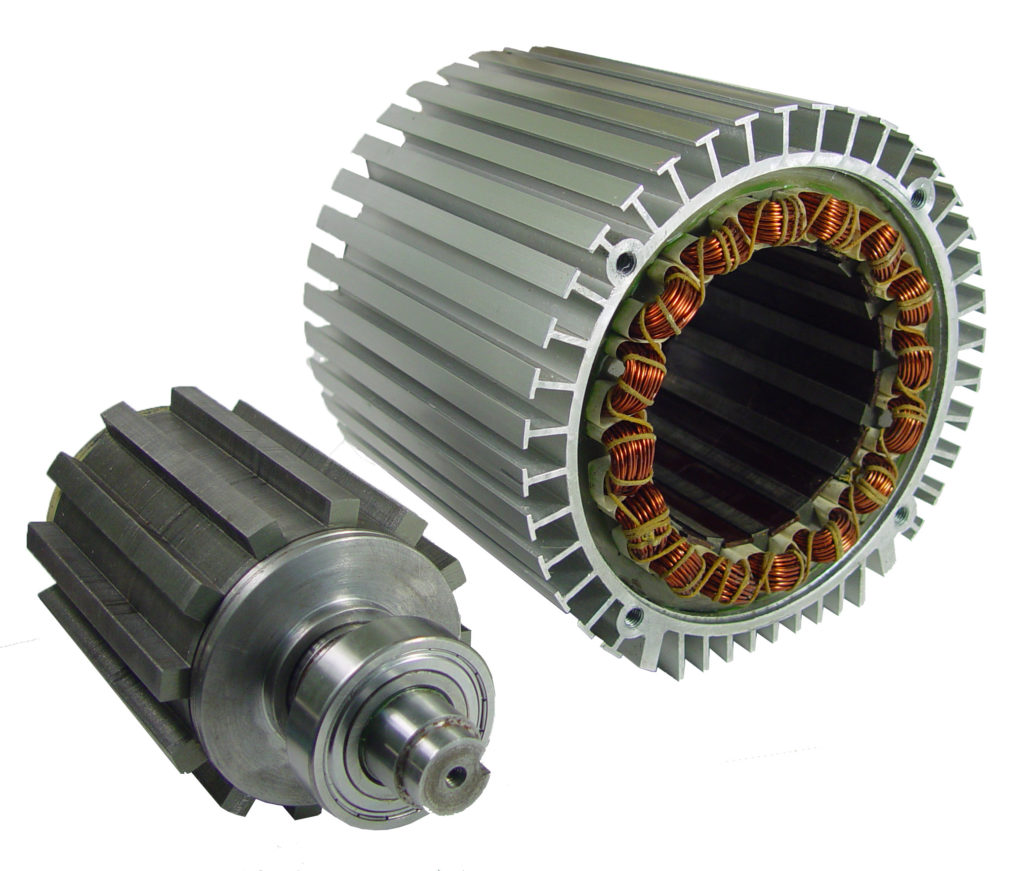The switched reluctance machine was the first electric motor to have been designed but until the recent two decades hasn’t been successfully implemented. The reasons deal primarily with controller and power switching components. The constantly changing magnetic field is highly non-linear, the torque ripple is high at low speeds, position sensors complicate the design. Earlier implementations were sometimes noisy, controllers were expensive due to high cost of electronic components. However, most of these difficulties can be overcome by using modern CAD and simulation software, digital signal processors which today are faster but cost much less, new power switching components, and by developing specialized hardware and sophisticated algorithms and models.

In contrast to well-known conventional motors SRM/SRG have “toothed” stator and rotor, and have neither windings nor permanent magnets in the rotor. For their operation, as in case of DC brushless motors, the power electronic converter, which is controlled in accordance with the rotor angle position, is necessary. During the operation, active stator poles (i.e., those with winding coils through which the current flows) pull the nearest rotor poles. When the poles are pulled enough, the current is changed to the next phase by means of the power electronic switches. This way the rotor keeps rotating.
During the past nineteen years there has been much research and development on the SRM/SRG. It gained momentum only after the advent of inexpensive high-power switching devices and low cost microcontrollers (single chip computers) that provide both software control and flexibility in the reconfiguration of control algorithms, and minimize the number of chips, thus enhancing the system reliability at a low cost.
SRM/SRG features:
- The lowest manufacturing cost of any motor or a generator;
- 4-quadrant operation. Motor can run forward or backward as either a motor or generator;
- A simple rotor without magnets or windings;
- Only stator requires cooling, due to low rotor heat dissipation;
- High efficiency over a wide speed range;
- High power-weight, torque-weight ratios;
- Low inertia;
- The most fault tolerant motor known;
- Optimum motor/generator for wide speed range;
- Optimum motor/generator for high temperature environments;
- Optimum motor for wide range of supply voltages;
- High repairability;
- Flexible layout construction: motor can be long or short (pancake construction), rotor can be inside or outside stator;
- Simple hermetic construction due to the fact that only stator requires cooling.
With these advantages, the potential applications for SRM/SRG are numerous. From fractional HP to very high-powered motors where variable speed and efficiency are required, SRM/SRG can address unique and varied requirements. For example, the favorable speed/torque relationships make them ideal for wide range of electric utility vehicles, electric cars, buses, trams, and trains. They can be irreplaceable for many kinds of watercraft with electric propulsion. In addition, there are many variable speed fan and blower applications where the low energy consumption of an SRM/SRG offers cost savings over the long term. These include blowers for gas furnaces, heat pumps, and refrigeration high-speed compressors and variable air volume systems.
However, the simplicity of the motor itself is offset by the difficulties of designing and controlling the machine. Design difficulties are connected with electromechanical non-linearity of the machine, and those of control with the necessity of having a sophisticated power electronic controller to be programmed to make the motor run and precisely match performance required. The principal obstacle to rapid commercialization of the SRM/SRG is the fact that few engineers are trained to perform the exacting and specialized design that this technology requires.
For development of the SRM/SRG we use a complex approach with primary focus upon the custom design of the machines or complete drive packages to meet specific requirements of a broad range of applications. This approach involves developing all components of the SRM/SRG (hardware and software) taking into consideration the basic peculiarities of electromechanical power conversion. All the necessary work is performed by one group of experienced engineers which ensures consistent approach and rapid progress with minimum expenses. Using various CAD systems during all stages of development allows us to design your machine quicker.

For designing and sizing the SRM/SRG for the application required, our specialists utilize detailed finite element analysis of the magnetic field inside the machine, with its results used for determination of the main electromechanical parameters of the SRM/SRG and its performance characteristics.

Simplicity of the motor itself allows it to be produced with standard multi-purpose machine tools and manufacturing of the motor is possible even at the factories where electrical motors have never been produced before. The switched reluctance drive can be easily integrated into any device or mechanism, sometimes without gears, which results in fairly high reliability and longer lifetime.












